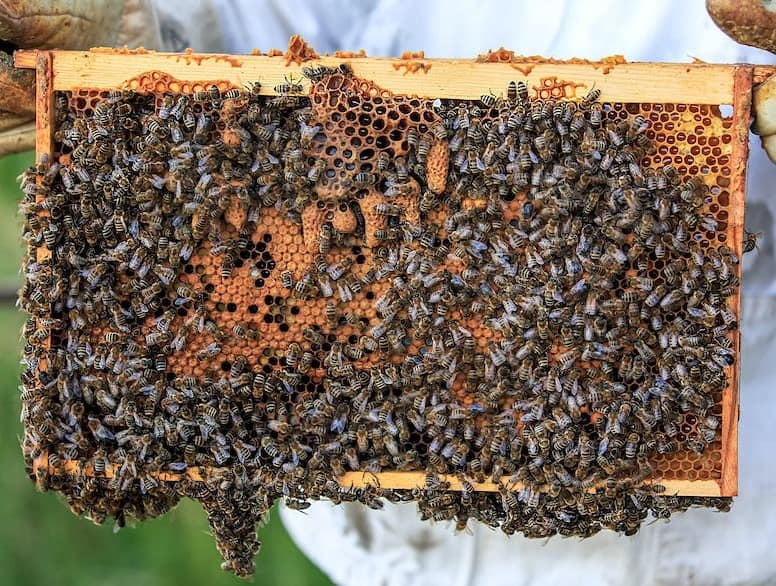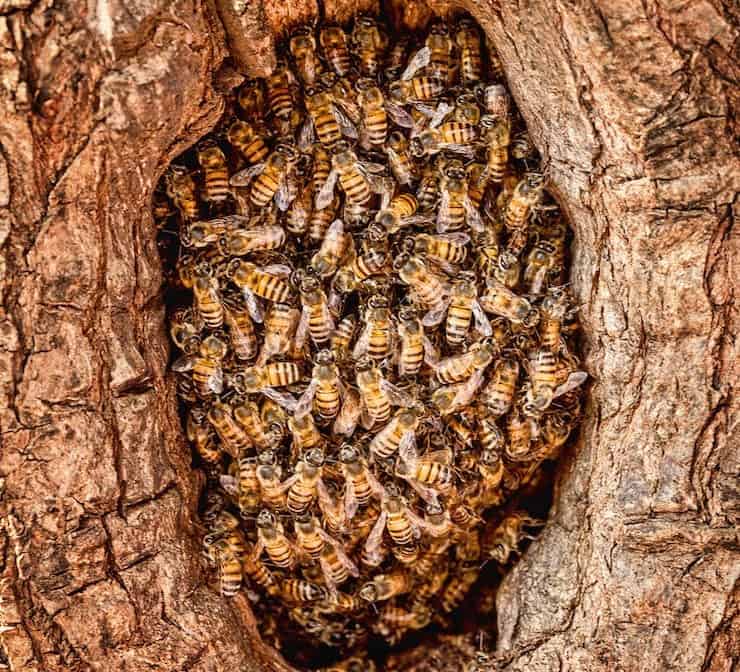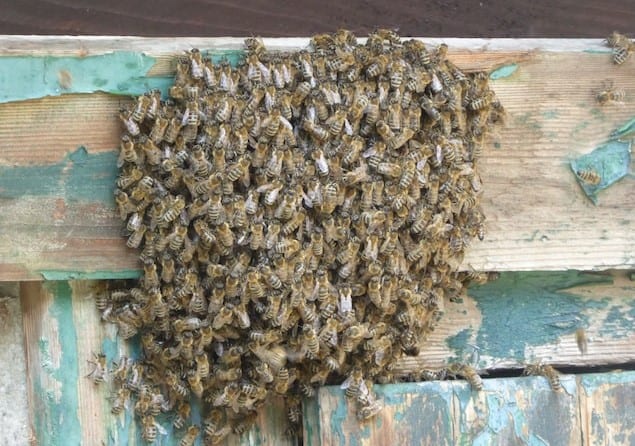While we commonly refer to our six-legged friend who brings us an abundance of honey as bees, have you ever wondered what they are called as a group?
We have read and heard of a hive of bees, a colony of bees, and a swarm of bees. Are they all the same thing?
Just like many, I have always been confused. People use these different phrases interchangeably. But, if we want to be really correct with the uses of these phrases, read on to learn the differences among these groups of bees.
Take note, I’m no linguist, so I can only put these as simply as I understand them 🙂

What do you Call a Group of Bees?
Scientifically named Anthophila, a bee belongs to the order Hymenoptera. There are around 16,000 known species of bees found globally except in Antarctica.
While we call a single insect a bee, we commonly refer to a group of them as bees. But technically, a group of bees may be called by other names other than just its plural form, bees.
Linguists, and even beekeepers, refer to a group of bees by various names. It all depends on certain circumstances, such as when they are in flight, inside their living quarters, or when commonly referring to bees.
In this blog post, we discuss the differences in the names we use to refer to a group of bees.
A Colony of Bees
In general, a group of bees is referred to as a colony. A “colony of bees” refers to bees living in a structured family group. The colony is composed of a caste system with a queen bee, drones, and worker bees.
The queen bee, drone bees, and worker bees are collectively referred to as a colony of bees.
If you are referring to a group of bees based on composition, we use the phrase colony of bees. It suggests that this group of bees lives and works together in one hive.
Without a queen honey bee, the bee colony would eventually die after a few months.
However, these generally refer to social bees and not to solitary bees. Some bees are solitary and do not establish colonies.

A Swarm of Bees
A large group of bees in flight to a new location is referred to as a “swarm of bees.” Swarming could be described as taking flight together as a group to establish a new hive.
Honey bees swarm when the hive gets too overcrowded. Swarming generally happens during the spring. When the spring is in an abundance of flowers with nectar and pollen, bees decide for themselves that a separate colony can survive. With or without a queen, a large number of bees swarms to establish residency in the neighborhood.
In most cases, it is the queen bee that initiates the separation from the old hive. A few drones and about half of the workers go with her to help her establish a new home.
Swarming could also occur when there is a new virgin queen in the old colony. Every colony can have only one queen. The new queen would take over the existing one while the old queen swarms, along with other bees, to establish her new nest elsewhere.
So, to describe a group of bees that fly away or are in transition from an old hive and on the way to setting up a new hive, we use the phrase “a swarm of bees.”

A Hive of Bees
When bees are within their living quarters, they are commonly called a hive of bees. In a hive, there is also one queen bee, the drones, and the workers.
A “hive of bees” is not the same as “a swarm of bees.” The hive refers to the living space of the bees. It is where these bees reside and come back to after a day of foraging. A swarm of bees does not go back to the old hive.
Of course, this phrase only refers to bees that live in hives. We do not refer to bees living in nests as a hive of bees.
Take, for example, the ground bees. These bees live in nests underground. They do not build and live in a hive. They create a nest with tunnels on it.

A Ball of Bees
When one sees a large number of bees flying outside their hive or nest, it may not necessarily be a swarm. It could be that the bees perceived danger and were preparing themselves for battle.
In this case, the group of bees is called “a ball of bees.” When bees sense an enemy approaching, they surround the enemy, forming a ball. Hence, the phrase “a ball of bees.”
Bees are not generally aggressive and would not sting for no reason. However, they would not back down on a perceived threat to their lives, their hive, or their nest.
When bees sense a threat coming, these bees will surround the perceived threat and attack as a group. When they do so, they form a ball around the enemy. Once cornered, it is then that they sting the enemy to death.

A Cluster of Bees
Over the winter, honeybees stay in their hives to let the cold season pass through. Beekeepers find ways to winterize their beehives to ensure that bees survive the winter.
On their own, some bees may not be able to survive. This does not mean, though, that the bees totally do not take the initiative.
As fall comes to an end and a cold breeze starts to seep in everywhere, bees huddle together inside the beehive. They form a single group of bees that we call a cluster of bees.
We use the phrase “a cluster of bees” when we specifically would want to refer to a group of bees inside the hive that huddles together.
In beekeeping, the cluster that bees create to keep themselves warm during the winter is called a winter cluster.

What is a Group of Bees Called? Does it Matter?
Depending on where they are or what they are doing, a group of bees can be called many names.
A swarm of bees, a colony of bees, a hive of bees, a ball of bees, and a cluster of bees are just the basic phrases we use to refer to a group of our six-legged friends.
There are differences in the usage of these phrases that refer to a group of bees. While some people are particular about this, we doubt it really matters much for others.
No matter what they are called, they are still a group of industrious insects that keep our ecosystem healthy. And some of them belong to that group that provides us with the golden syrup we call honey.
